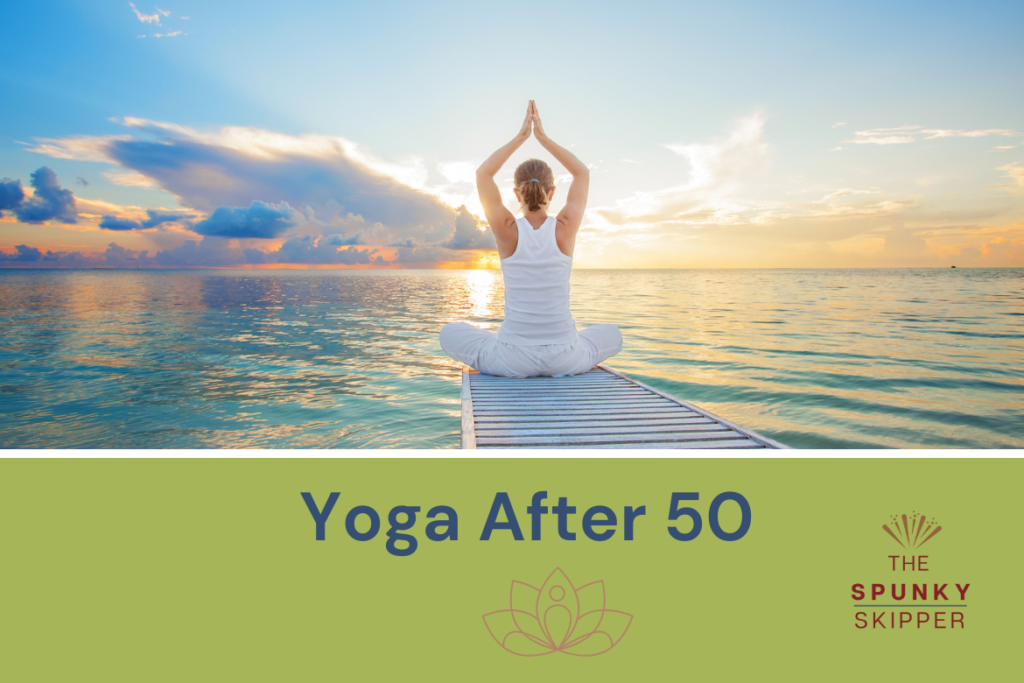Yoga is for every age and body type
If you’re wondering if starting yoga after the age of 50 is impossible, don’t. Read the publisher’s experience with yoga on her blog – and she’s over 50.
Yes, I unrolled my first yoga mat in 2011 when I was 14 years old, tagging along with my mom to local Kundalini classes and sound healing sessions. But not everyone starts yoga with a purpose or at an early age. While my practice began simply as a new way to stay active and spend quality time with my mom, yoga soon turned into a way for me to help confront and work through trauma. I fell in love with the mental and spiritual benefits that accompanied the practice and became especially attuned to how the sense of grounding and being present on the mat directly contributed to my being present in other areas of life off the mat.
As someone with an especially busy mind, I appreciate the importance of time spent focusing on the breath and the body, letting go of the day-to-day worry and stress. I now practice five to six days a week and have a love for the challenging Vinyasa and Jivamukti classes, as well as gentle Yin, but love to return to Kundalini when I am feeling nostalgic.
Starting your yoga practice after 50: At home or in studio?
One thing about pandemic life that has been especially challenging for many of us is how sedentary we’ve become. Even pre-pandemic homebodies have to admit, we’ve been spending much more time at home than we may be used to, and with many gyms and fitness centres still closed, incorporating some movement into our lives requires much more intention and a bit of added creativity these days. Luckily, there is no shortage of great ways to keep active and healthy from the comfort of our own homes.
Given the added stress and uncertainty many of us have been feeling over the past year, it may be a good idea to integrate an activity that not only exercises our bodies, but also has profound effects on the mind and spirit. Let’s talk about yoga – just the basics to get you started, how to meaningfully practice from home, and a few asanas to help get you through the day.
50 and never set foot on a yoga mat? Great time to try something new!
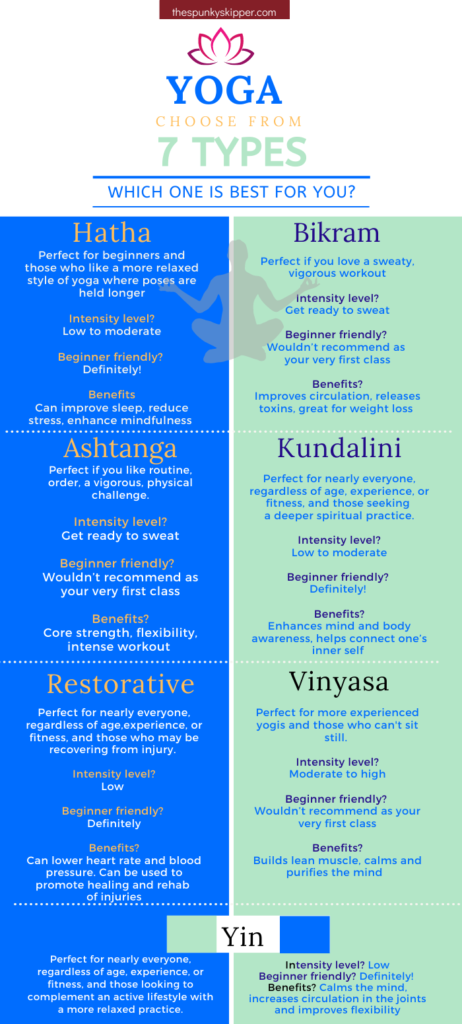
Despite the deep sense of humility that is rooted to the yoga philosophy, getting started can be intimidating. Before I set out on my yoga journey, I equated the image of yoga with that of the uber-fit yogis contorting themselves into pretzel-like shapes in a dimly lit, sweltering studio. And that is yoga – one person’s particular practice.
The truth is, yoga is an incredibly personal activity that varies from person to person, and there is no right or wrong time in your life to begin your practice. As with any new form of exercise, however, it’s important that you begin with an awareness of your current fitness level, and do not try and push yourself too far, too quickly. Be mindful of any pre-existing health conditions, and check with a doctor before you get started.
According to John Hopkins Medicine, yoga offers a number of health benefits in addition to being a great workout, so you’re likely to get the green light from your doctor. Now, what?
If your region is still under current restrictions, it’s unlikely you’ll be able to pop over to your local gym or studio. Luckily, we live in the era of social media and as long as you have a reliable internet connection (or a very good memory!) you can take advantage of tons of classes, instructional videos, learning guides, and meditations from the comfort of your own home. Many websites offer membership subscriptions for unlimited access to their content for less than $15 per month, such as Do Yoga With Me, which is one of my favorites, but it’s equally as easy to find free classes on the web.
Before you get started, you’ll need to consider what style of yoga you are most interested in. Do you want a high-intensity class that will get your heart pumping and leave you glistening with sweat? I’d recommend Vinyasa, Ashtanga, or Bikram classes, but with a gentle reminder to listen to your body, and practice at the level that is most suitable for you – perhaps that means easing into these types of classes if you’re an absolute beginner.
If you’re looking for something a little less intense, with more of a focus on stretching and relaxation, then Hatha, Yin, or Restorative Yoga are some great choices.
Whatever your experience level or class preference, when practicing at home without the in-person supervision of an instructor it is important to be cautious, especially when moving from different postures, and listen to your virtual instructor’s guidance. This may mean modifying certain challenging poses, or taking a break when things feel a bit too intense. You are the best judge of what works for you and what does not, so always listen to your inner voice.
For a more in depth look at the 7 types, keep reading
Ashtanga
In each Ashtanga class, you will practice one of six series, which involve synchronizing breath with progressive, continuous postures, performed in a precise, sequential order. Each series is a set sequence of asanas, and range from Primary Series, Secondary Series, and Advanced Series A, B, C, and D. Most studios only offer the Primary and Secondary Series, as the subsequent four series are for incredibly advanced yogis. The classes are vigorous and physically challenging, and take between 90 minutes to two hours to complete.
Bikram
Bikram yoga classes are all about consistency. Each class features the same 26 poses and two breathing techniques, practiced in the same order, for 90 minutes in a room heated to 40 degrees Celsius, with 40% humidity. Dress lightly and bring plenty of water – you are going to get sweaty.
Hatha
Hatha has become a sort of umbrella term for yoga that combines poses with breathing techniques. It is the classic style of yoga that might first enter your head when you think ‘yoga’. Generally, you can count on Hatha to be relatively gentle and performed at a moderate pace, which makes it a great choice for anyone at any place in their yoga journey.
Kundalini
Kundalini is a style of yoga like no other due to its strong focus on spirituality and mindfulness. It incorporates repeated movements at a slow pace, energetic breathing techniques, meditation, chanting, and mantras that aim to release the untapped energy believed to sit at the base of the spine.
Vinyasa
Vinyasa is another umbrella term for yoga styles that incorporate synchronized movement and breath. Vinyasa classes are also called flow classes, which refers to the body flowing from one posture to the next. Classes are vigorous and incorporate almost dance-like movements as students flow through sun salutations.
Yin
Yin is slow-paced and passive, focusing on seated postures held for five minutes or longer. Yin aims to find total stillness while cooling down the body, and while it is a slow-paced class, it can still be challenging! Holding poses for such long periods of time, and quieting the mind at the same time requires great focus.
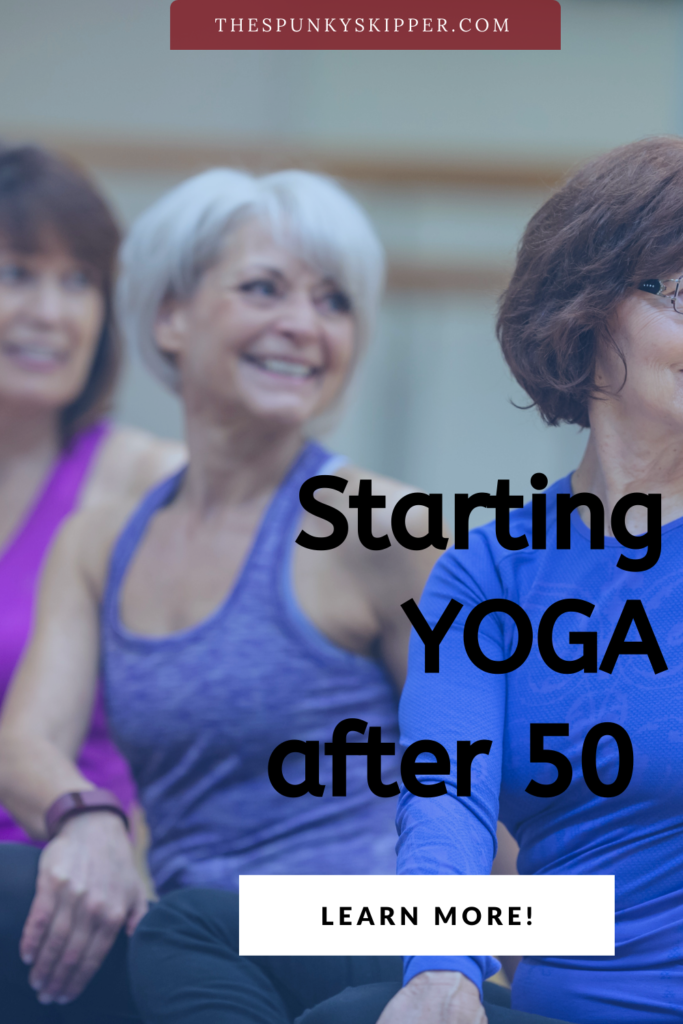
Do I need special equipment to begin my home practice?
One of the great things about yoga is that it is fairly low maintenance, relative to other forms of activity. You don’t need to spend a fortune on fancy accessories or equipment in order to feel prepared for your practice.
At the most basic level, all you need is an area in your home with enough space for you to lay down on your back with your arms stretched out in a “T” shape, and enough room for you to stand with your arms stretched above your head. That’s it! Of course, many people prefer to use a yoga mat to provide an extra bit of comfort, rather than practicing directly on the hard ground – but this is totally up to you. Some prefer to incorporate other props like bolsters, blocks, and straps, but again, this is entirely optional and based on what you feel your body needs.
Apart from your mat and any other optional props you may choose to use, an important part of your at-home practice is a dedicated space. Just as yoga is a great physical workout, the spiritual component cannot be understated, and so your space should feel intentional. For some, this may be a spare room that can be dedicated to your practice. For those of us living in apartments and condos (myself included!), perhaps a spare room is not an option. In this case, simple acts can help set the mood for your practice, and help you unroll your mat with intention.
Turning a small space in your home into your own personal shala is totally doable. This may simply mean dimming the lights before you begin, loading up a diffuser with your favorite oil, or lighting a nice scented candle. The purpose is to signal to your mind and body that your practice is beginning, and that for the next hour, 30 minutes, or even 10 minutes, the focus is your practice.
We hope you are enjoying the articles on The Spunky Skipper. When you purchase through the product links provided we earn a small commission at no extra cost to you. We appreciate your support.
A few simple asanas in times of stress
The term ‘asana’ is used to refer to any physical Hatha posture in all styles of yoga. In Sanskrit, asana is also the suffix in the name of the pose (see below for a few examples).
Let’s face it, even in lockdown, our days can be busy. We can’t always carve out time for a full class. That’s just reality! However, even spending a few moments holding a couple key poses can be beneficial.
Below are some of my favorite poses when I have only a few minutes – or when I’m simply feeling too tired for a lengthy practice. These are also some of my favorite poses to visit when the stress of the day weighs heavily on me, as they offer the opportunity for great relief. I hope they bring you light and joy, and a few moments to move with your breath.
Happy practicing!
Namaste
(pronounced \NAH-muh-stay\ is a Sanskrit phrase that means “I bow to you.” You place your hands together at the heart, close your eyes and bow.)
Poses with images
Standing Forward Fold (Uttanasana) with Halfway Lift (Ardha Uttanasana)
🡪 Benefits: Not only stretches your hamstrings, calves, hips, and back, but also stimulates the liver and kidneys, and helps combat stress and insomnia.

Downward Facing Dog (Adho Mukha Svasana)
🡪 Benefits: A full body stretch that targets your hamstrings, shoulders, calves, and hands. This posture helps calm the brain, and can also help relieve the symptoms of menopause. Sign me up!

Triangle Pose (Utthita Trikonasana)
🡪 Benefits: This is another full-body stretch that reduces stress and anxiety. Triangle pose helps to stretch out your lower body, and strengthen your upper body, and is also known for helping with sciatica, digestion, and osteoporosis!

Child’s Pose (Balasana)
🡪 Benefits: Helps to soothe the adrenals, which can become irritated from stress. Child’s pose helps to stretch your back, hips and thighs, and is also known to help restore the nervous and lymphatic systems.
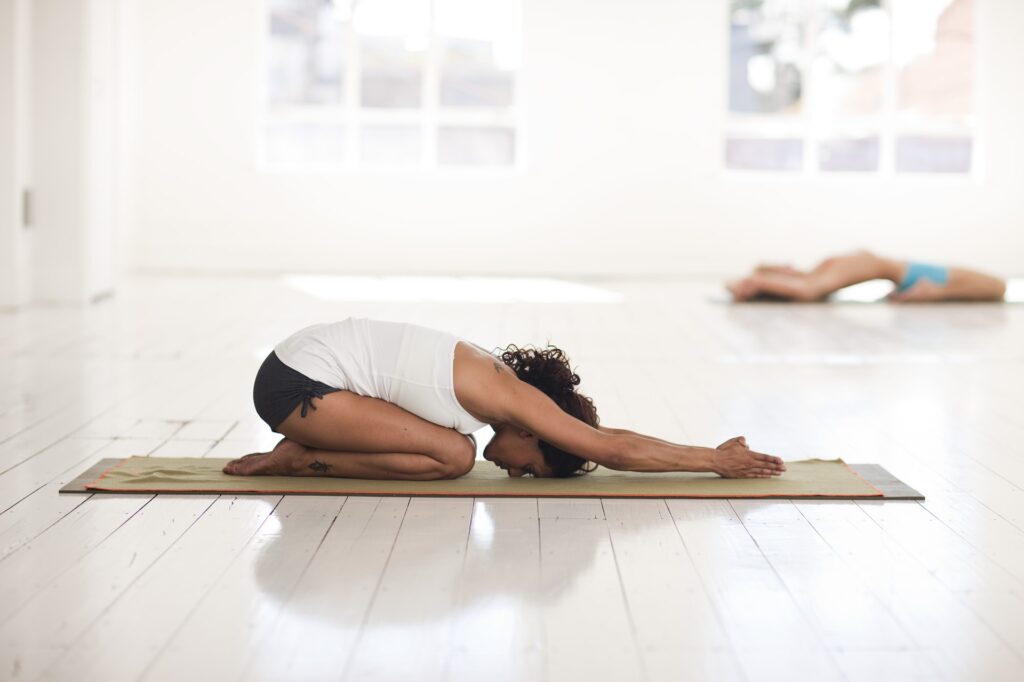
Tree Pose (Vrksasana)
🡪 Benefits: Stretches your hips, inner thigh and groin muscles, while also strengthening your core and legs. You can’t go wrong with improving your balance and toning your core!
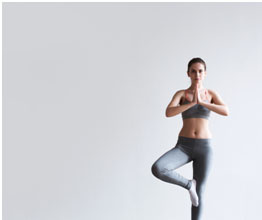
Corpse Pose (Savasana)
🡪 Benefits: Provides a period for extreme relaxation and rest after practice. By remaining still and focusing on your breath, your concentration improves, your mind calms, and you may feel a deep sense of relief as the worries of the day wash away.

Let us know how you made out with yoga the first time. Did you enjoy it? Did you hate it? Somewhere in between? 🙂 Leave us a comment.
Yoga resources
Do Yoga With Me
Other blogs and articles you may be interested in by us:
Blog: Is 50 too old to start yoga?
Why The Spunky Skipper?
“Ok, Boomer”: Decoding your Teen Grandkid’s slang
How to cook a turkey in Air Fryer in under 2 hours
Geting rid of your old CDs for newer tech

